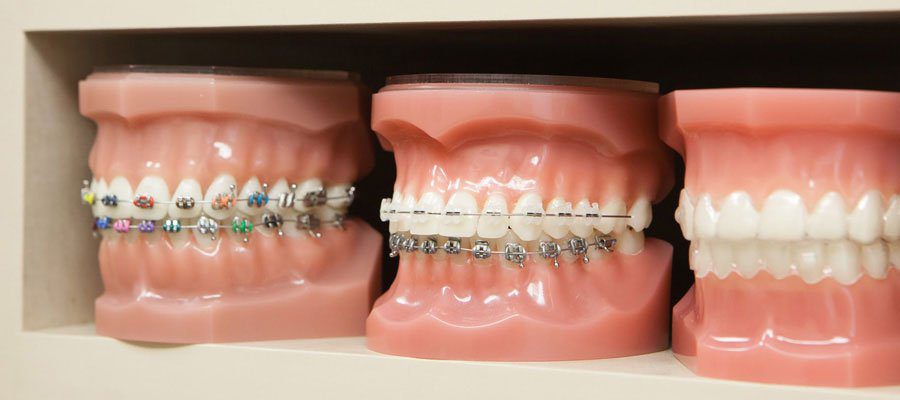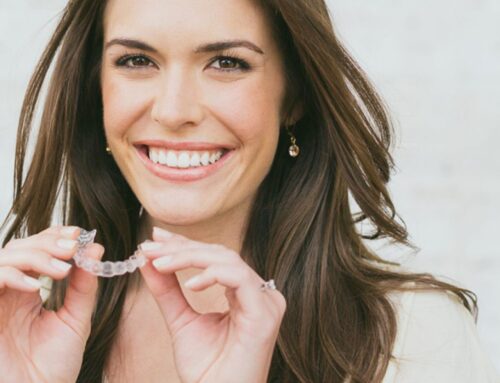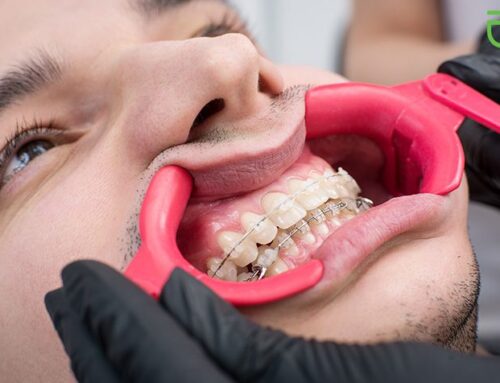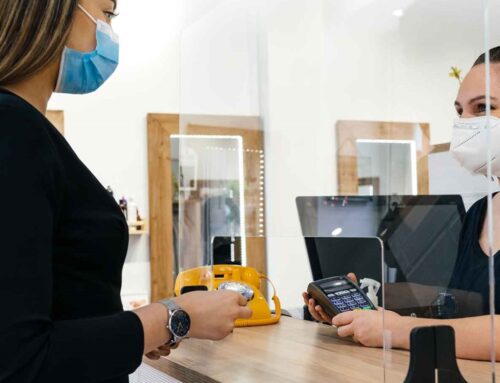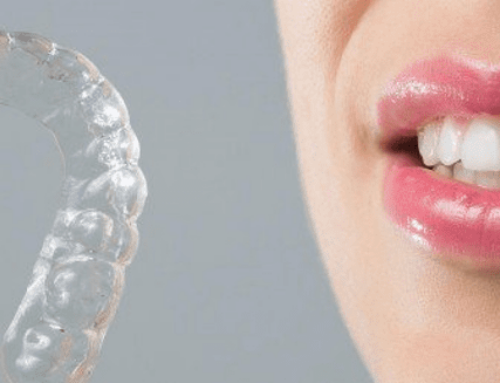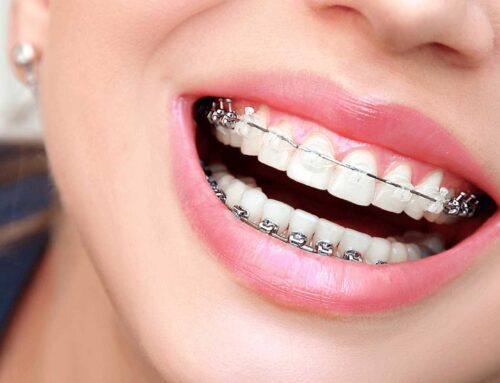Are Invisalign Braces as Effective as Metal Braces?
Here’s What You Should Know.
It is a dilemma, to choose the best orthodontic treatment for yourself, especially when you must make a choice between some of the most successful and popular orthodontic options available.
To help you with this difficult decision, we have created a comprehensive guide on the efficiency of traditional metal braces and Invisalign braces. We will also address some of the most significant concerns and differences between both forms of orthodontic treatments, to help you make an informed decision.
When you compare Braces and Invisalign, the results are impressive in both cases, but there are many other factors that weigh in. Doing your own research, asking questions, and seeking advice from your orthodontist are just some of the factors that will help you make the right decision. In the end, the orthodontic treatment that’s best for you will largely depend on the type of oral problem you are facing. Invisalign is a very popular orthodontic treatment amongst patients but not all dental problems can be solved by it, this is why its so important to have a in-person consultation with your Orthodontist.
Traditional braces are made from metal brackets and wires and are a highly visible form of orthodontic treatment. Although lately there have been transformations within this category and upgraded versions of traditional fixed braces have been developed. These include but are not limited to Ceramic Braces, Lingual Braces, Self-Ligating Braces, etc.
On the other hand, Invisalign is an orthodontic treatment that comes without any fussy brackets, wires, or ligatures. They use simple and clear plastic aligners that are custom made for every patient by taking a 3D impression of their mouth.
Overview on Invisalign
It is an orthodontic treatment that requires you to wear customized aligners to straighten your teeth. The process helps your teeth move into the right position slowly and gradually, making better jaw alignment possible. When compared to braces, the Invisalign treatment is more comfortable and aesthetic.
Once you have decided that you want to proceed with Invisalign as your treatment, your orthodontist will take x-rays and digital impressions of your teeth and send them to Invisalign along with some instructions on how they want your teeth to move. Then, the technicians at Invisalign will digitally generate a 3-D rendering of your teeth to demonstrate the course of direction your teeth will take when they move to their desired positions. This information will then go to your orthodontist who will share it with you so that all parties are on the same page. There could be a little back and forth between Invisalign and your orthodontist regarding adjustments until both parties get the course of treatment exactly right. When you and your orthodontist both are satisfied with the potential results, the trays are ordered.
Once the aligners are delivered to the orthodontist’s clinic, they are ready to be used. All the aligners used are unique and are designed to be used according to a specific timeline, but each aligner is generally used for two weeks. With the progression of your treatment, each new aligner will move your teeth, little by little. One of the biggest conveniences of Invisalign is that the aligners are removable, so you don’t experience any problems while eating, drinking, brushing, and flossing. Otherwise, you are supposed to wear these aligners for most of your day (20-22 hours) in order for them to work as intended. Failing to wear them properly will hinder the progress in the alignment of your teeth and the succeeding aligners won’t fit you as they are supposed to.
When you’ve finished wearing your last Invisalign aligner, your dentist will assess your teeth’s new position and compare it with the goal of alignment you had initially. Sometimes, supplementary adjustments are required which can be accomplished by wearing ‘refinement’ trays. These refinement trays are a part of the treatment (if required) and come with no additional cost as Invisalign expects that patients might need them.
Once your treatment is complete, wearing retainers is necessary and your responsibility. Wearing retainers after an orthodontic treatment helps solidify the new alignment of teeth with the jawbone. Invisalign makes their own official retainers called Vivera that are made from the same premium-grade SmartTrack™ plastic used in Invisalign aligners. Compared to other retainers, these are thicker and more durable. To keep your brand-new smile intact, it is compulsory that you regularly wear your retainers for at least 3-6 months (or for the amount of time advised by your orthodontist) after your orthodontic treatment is complete.
Braces Vs. Invisalign Differences and Comparison Chart
| Braces (Fixed) | Invisalign (Removable) | |||
| Color | Metallic Silver/Ceramic (Elastic ligatures can be colorful) | Transparent/Invisible | ||
| Length of Treatment | 24×7 and between 1-3 years, depending on the patient’s case | 20-22 hours/day and between 6 to 24 months, depending on the patient’s case | ||
| Cost | $3,000 to $7,000 | $4,000 to $7,400 | ||
| Cleaning & Maintenance | Regularly brush brackets and wires while brushing teeth, specialized floss threader or water pick can help. Make routine dental visits and avoid sticky and brittle foods. | Invisalign Cleaning Crystals or brushing, rinsing and soaking aligners in lukewarm water regularly. Remove aligners before meals and brush/floss teeth twice daily. Routine dental visits. | ||
| Follow up visits | Monthly | Change aligners in every two weeks; Dentist visits in every 4 to 6 weeks. | ||
| Retainers | Yes | Yes | ||
| Pros | More effective for severe or complex cases. | · | Transparent, almost-invisible look. | |
| Since they are permanent, progress is consistent. | Removable and convenient aligners. | |||
| Less expensive. | No dietary/food restrictions. | |||
| They are fixed, so less self-discipline is needed for progress. | No risk of food getting stuck or aligners being damaged while eating. | |||
| Elastic ligatures can be colorful. | Easy to wear, comfortable. | |||
| Multiple types of braces, so you have more options. | Gives a professional and cleaner look to working adults. | |||
| Time-tested and reliable. | Maintenance is easier. | |||
| Treatments can be designed to straighten as well as whiten the teeth. | ||||
| There’s no difficulty when eating and no discomfort from wires, as there are none. | ||||
| Cons | Metal wires, brackets and ligatures in traditional and self-ligating braces are highly noticeable. | · | Requires the patient to be self-disciplined as it’s necessary to wear these aligners for at least 20-22 hours a day to see results. | |
| Food and dietary restrictions are applicable, can’t eat hard and sticky foods if you want your braces to be durable. | May be more expensive. | |||
| Wires and brackets can trap food and bacteria. | Must remove before eating or drinking anything except water. | |||
| Can be irritable and cause sores and discomfort at first due to wires, brackets or even tooth movement. | Aligners can stain if you don’t brush after every meal. | |||
| May require a water flosser for better cleansing and maintenance. | Can get lost easily and getting a replacement usually takes time. | |||
| Can possibly cause tooth discoloration due to enamel abrasion, bracket breakage, and difficult hygiene. | Very complicated cases may require a supplemental braces treatment. | |||
| Not an Ideal Treatment For | Patients who are into rough contact/collision sports and activities. | Patients who have: | ||
| Dental bridges | ||||
| Issues with their back tooth bite | ||||
| Orthodontic intrusion or the need for vertical tooth movement | ||||
| The need to rotate premolars and/or canines | ||||
| A lack of self-discipline to wear aligners for at least 22 hours daily | ||||
| Ideal Treatment For | Consumers on a budget, teenagers, and kids | Working professionals, adults, and responsible teenagers |
Braces vs Invisalign: What to Choose?
Clearly, the battle of Braces vs. Invisalign is a tight contest. Both are great choices that will help you achieve a happy and healthy smile. While each treatment has its own specific advantages, both offer a precise and reliable movement of the teeth and will improve your bite, smile and confidence.
Invisalign and braces, both treatments are successful but exact success rates for Invisalign are difficult to find as they haven’t been around long enough to gather detailed long-term data. Also, Invisalign’s success completely depends on the patient who’s wearing them, because they obviously won’t work unless you wear them. But with braces, there’s not much choice left as they are fixed to the teeth.
Lastly, for more complex cases, such as a severe overbite, rotated teeth, and large gaps, Invisalign isn’t an option. This is why an in-person consultation with an orthodontist who is experienced with both Braces and Invisalign, is an absolute must. They can advise and recommend the most effective solution to straighten your teeth and help you achieve the perfect smile based on your specific conditions.
At Georgian Dental, we offer all modern orthodontic options, from traditional metallic braces, ceramic braces, clear braces, and of course, Invisalign braces. Our orthodontists will diagnose your oral problems and recommend a treatment option that is best suited for your needs. And together we can keep you smiling confidently for years to come.
So, what are you waiting for? Book an appointment today because we can’t wait to see that flawless smile on your face!
Appointment Request
If you’re interested in any of our procedures, and would like to meet with one of our dentists to discuss options, costs and get additional information, complete this short form and we’ll give you a call to arrange for a no-obligation appointment at our Barrie clinic.
